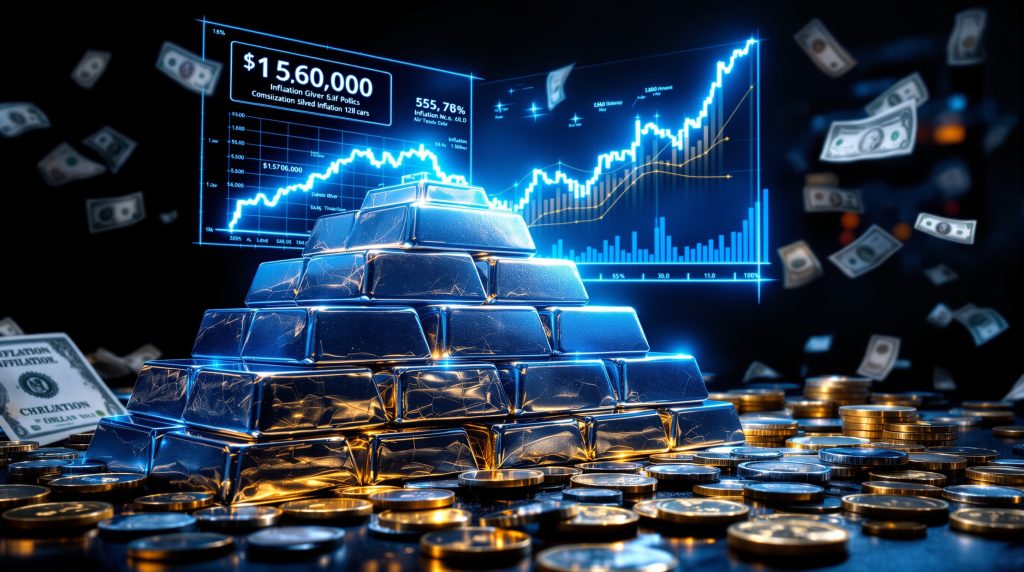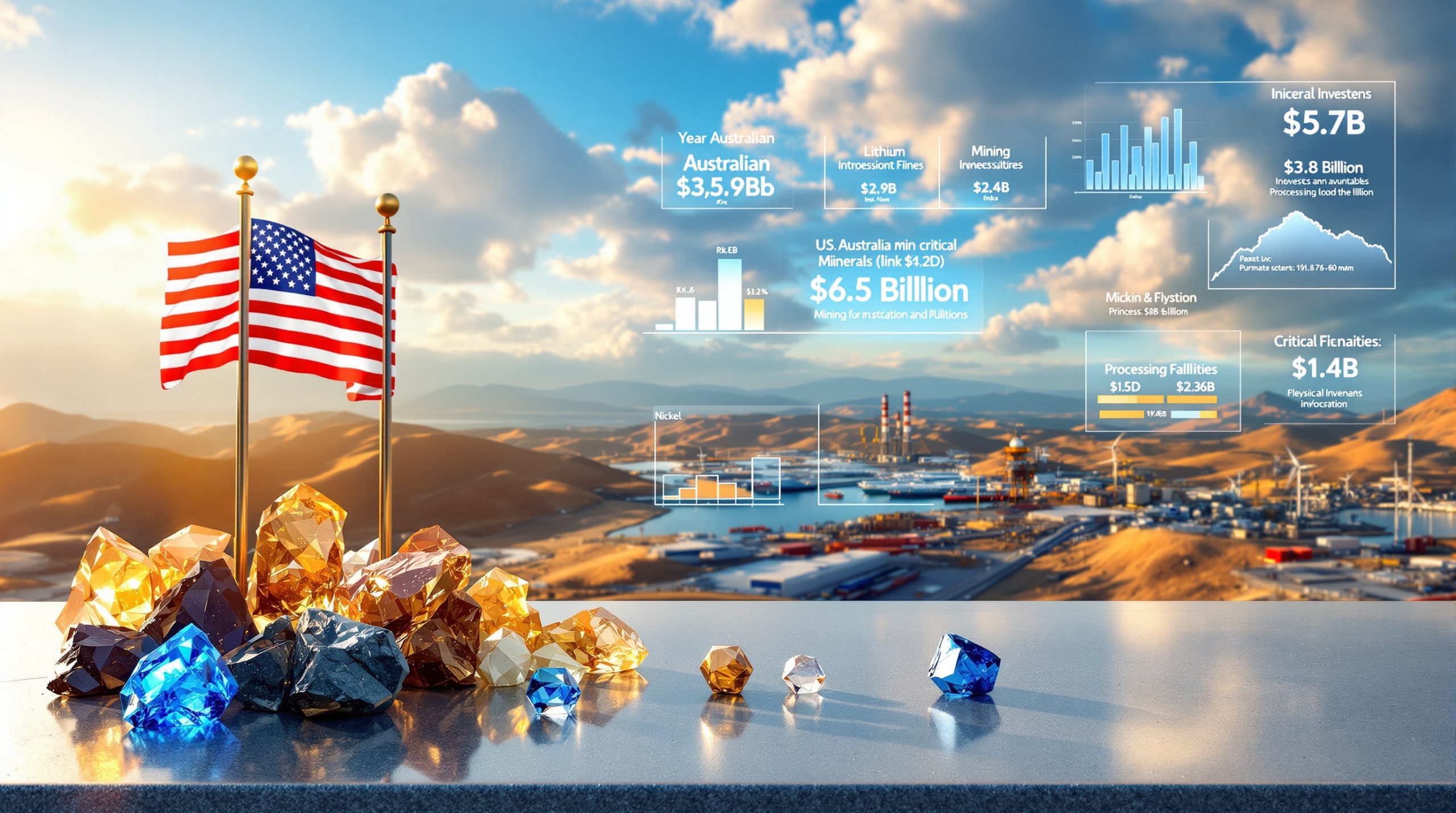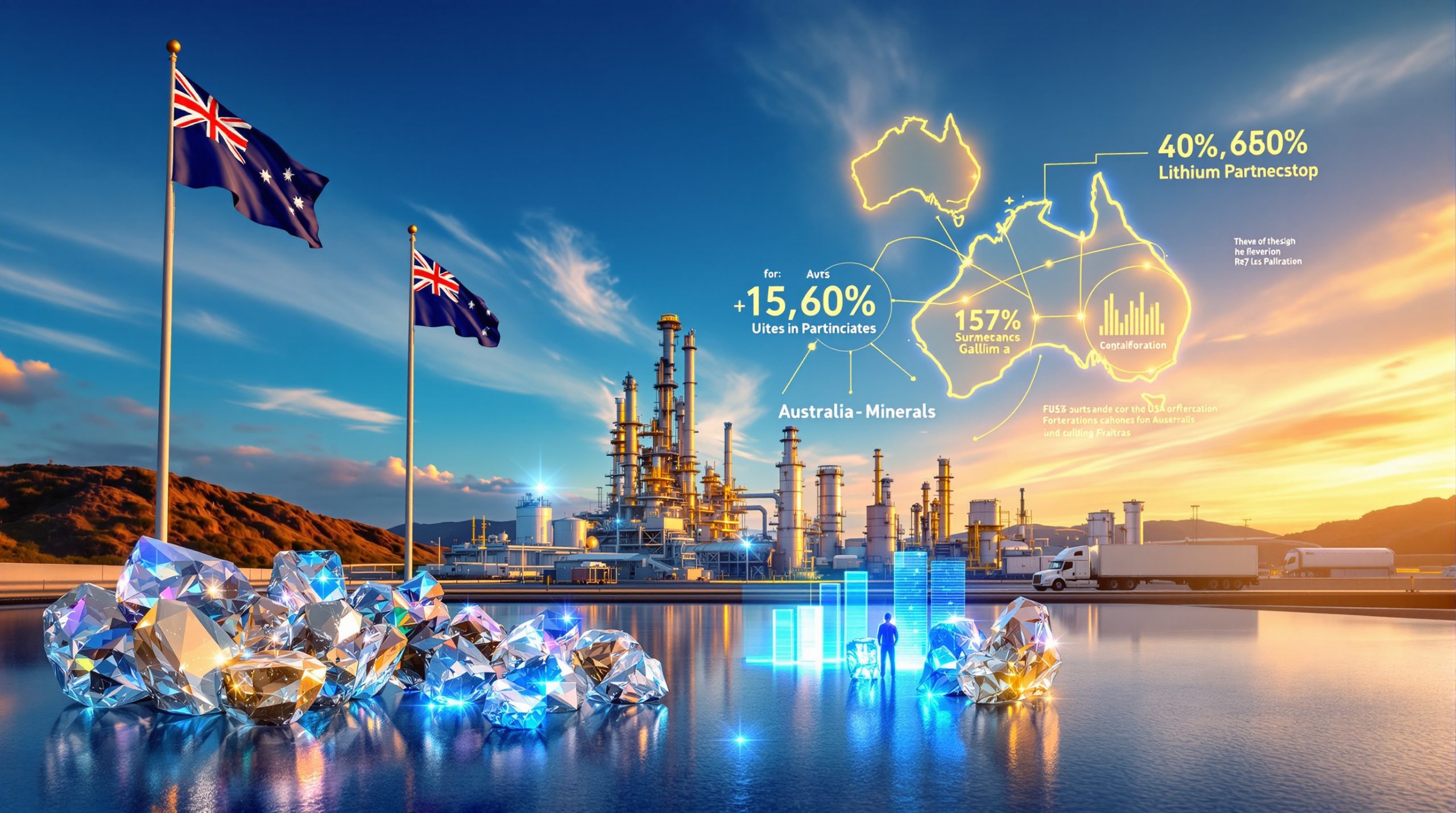What's Driving Current Precious Metals Prices?
The precious metals market has been experiencing significant volatility lately, with silver and gold markets both displaying interesting price movements that have caught investors' attention. Understanding the forces behind these shifts requires examining both technical factors and broader economic influences.
Market Cycles and Recent Price Action
Silver recently climbed to approximately $39 per ounce before experiencing a notable pullback, marking a 12-14 year high before the consolidation phase began. This surge and subsequent correction exemplifies the cyclical nature of precious metals markets, where periods of rapid appreciation are often followed by consolidation or correction.
Gold markets have been showing distinct consolidation patterns, suggesting a potential buildup of energy before the next significant move. These patterns often precede major price movements in either direction, making the current environment particularly intriguing for technical analysts studying recent gold highs analysis.
Price discovery in metals markets continues to be influenced by a complex interplay of physical demand, futures market activity, and large institutional positioning. This creates opportunities for informed investors who understand the underlying dynamics.
"When silver goes down 1%, the stocks go down 5%." – Lobo Tigra, CEO of Independent Speculator
Historical context is crucial for evaluating current price levels. Silver's recent peak represents a multi-year high but remains well below its all-time high when adjusted for inflation, suggesting potential room for further appreciation in a favorable environment.
Macroeconomic Influences
Recent economic data has created a puzzling disconnect between market sentiment and underlying realities. The latest CPI report showed core inflation exceeding 3.1%, higher than the expected 3.0%, yet broad market indices continued to rally.
"We just got the CPI report… the core number goes up more than expected goes up over 3%… it went over three and… nobody's paying attention," notes Lobo Tigra. "The Wall Street, you know, all three of the major indices zoomed today and everybody… was 'Oh, this is great. Inflation is tamed'… on what planet?"
This divergence between inflation data and market response highlights a potential disconnect between economic fundamentals and asset prices. While the Federal Reserve focuses more on PCE (Personal Consumption Expenditures) as their preferred inflation gauge, persistent CPI readings above target suggest continued inflationary pressures that could impact the gold price forecast.
Liquidity-driven investment behavior currently appears to be overshadowing fundamental economic concerns, creating a market environment where optimism prevails despite warning signals. This psychological backdrop influences precious metals pricing, as gold and silver traditionally serve as inflation hedges.
How Do Silver's Dual Roles Impact Its Investment Case?
Silver's unique position as both an industrial metal and monetary asset creates a complex investment case that differs significantly from gold. This dual nature means silver responds to a broader range of economic factors, creating both opportunities and challenges for investors.
Industrial Demand Fundamentals
Silver's industrial applications span numerous high-tech and growing sectors, including electronics, photovoltaics, medical equipment, and antimicrobial uses. These applications provide a demand floor that pure monetary metals don't experience.
"Silver does have its industrial side… it's a critical mineral that's used for… all that other stuff," explains Lobo Tigra, highlighting the metal's importance in manufacturing and technology.
Near-term industrial demand may face headwinds as economic policy shifts work through the system. "I am worried that it's industrial side in the near term as Trump shock continues to work its way through the economy," notes Tigra, suggesting potential volatility as markets adjust to policy changes.
Long-term consumption growth remains promising, particularly as green energy technologies and electronics continue expanding globally. Solar panel production alone requires significant silver inputs, creating sustained demand regardless of short-term economic fluctuations.
Monetary Aspects and Store of Value
Silver's historical role as monetary metal continues to influence its investment appeal, despite changes in how modern economies use currency. While no longer used in circulation, silver maintains its status as a tangible store of value.
The evolution of payment systems has changed silver's practical monetary application. "In today's world people aren't going to go around with medieval coin purse clanking coins around. It's going to be transferred electronically," observes Tigra, highlighting how digital payments have transformed currency usage.
Physical ownership offers benefits beyond currency applications, including portfolio diversification, inflation protection, and insurance against systemic financial risks. This aspect of silver ownership has attracted increasing interest during periods of economic uncertainty, particularly among those concerned about a potential silver market squeeze.
Silver's affordability compared to gold makes it accessible to a broader range of investors, creating a different demographic profile and investment pattern. This price point advantage allows investors to accumulate significant physical positions with relatively modest capital commitments.
What Investment Strategies Work Best in Today's Metals Market?
Navigating the current precious metals landscape requires strategic approaches tailored to market conditions and individual investment objectives. Both physical metal accumulation and mining equities offer distinct advantages and considerations.
Physical Metal Accumulation Approaches
Dollar-cost averaging represents a prudent approach to building physical positions, particularly during periods of price volatility. By regularly purchasing fixed dollar amounts regardless of price, investors can mitigate the risks of mistiming market entry points.
Portfolio allocation considerations should account for precious metals' role as both wealth preservation tools and potential growth assets. Traditional recommendations suggest 5-10% allocation for conservative investors, while those more concerned about monetary instability might allocate significantly more.
"This is one reason why I do stack physical… there are scary things in the world." – Lobo Tigra
Storage solutions present an important practical consideration for physical ownership. Options range from personal safes to professional vaulting services, with security, insurance, and accessibility being key decision factors.
Liquidity factors should not be overlooked when building physical positions. While precious metals are generally liquid assets, premiums over spot price can vary significantly depending on product type, size, and market conditions, affecting real-world liquidation values. Many investors track current prices through live price charts to make informed decisions.
Mining Equities and Leveraged Exposure
Mining stocks provide amplified exposure to metal price movements, typically moving about 5% on 1% silver price changes. This leverage effect creates potential for outsized returns during bull markets, but also magnifies downside risk during corrections.
Risk management becomes particularly crucial when holding mining equities. Portfolio position sizing, stop-loss strategies, and diversification across multiple operations can help mitigate company-specific risks that don't affect physical metals.
Evaluation metrics for quality mining operations should include production costs, reserve quality, jurisdiction risk, management experience, and balance sheet strength. These factors significantly impact a company's ability to capitalize on favorable metal prices.
Balancing physical holdings with equity investments allows investors to pursue both wealth preservation and speculative growth opportunities. The appropriate mix depends on individual risk tolerance, investment timeframe, and economic outlook, as discussed in various gold investment strategies.
When Is the Right Time to Increase Precious Metals Exposure?
Timing investments in precious metals markets presents unique challenges, especially following significant price appreciations. Understanding both technical indicators and market psychology can help investors make more informed decisions.
Technical Analysis Perspectives
Price consolidation patterns following multi-year highs often provide insight into future movements. Current silver market patterns suggest a period of digestion after reaching approximately $39, potentially setting up the next significant move.
Support and resistance levels deserve close monitoring during consolidation phases. Previous resistance areas often become support after breakouts, creating potential entry points during pullbacks that respect these technical levels.
Volume indicators during pullbacks can help distinguish between temporary corrections and deeper trend changes. Decreasing volume during price declines often suggests waning selling pressure, while increasing volume may indicate more significant distribution.
The gold-silver ratio insights (the number of silver ounces required to purchase one ounce of gold) provides useful context for relative value. Historical patterns in this ratio can help identify when silver appears undervalued or overvalued compared to gold.
Contrarian Investment Psychology
Buying during consolidation phases presents psychological challenges that many investors struggle to overcome. The fear of missing further upside battles with concerns about entering at relative highs, creating decision paralysis.
"It's not my nature to tell people to pile on to something that's just hit a multi-year high. I'm always trying to buy low and sell high," says Lobo Tigra, highlighting the contrarian mindset that often characterizes successful precious metals investing.
Emotional responses to price volatility frequently lead to suboptimal investment decisions. Research consistently shows that investors who act on emotion tend to buy high and sell low, undermining long-term returns.
"If we get a three or 4% retreat in silver, we could get a massive buying opportunity," Tigra suggests, pointing to potential entry points during normal market corrections.
Long-term perspective proves essential for successful precious metals investing. The ability to see beyond short-term price fluctuations allows investors to accumulate positions systematically during favorable conditions rather than chasing momentum.
Which Global Developments Could Trigger Metals Price Movements?
Geopolitical events and policy decisions increasingly influence precious metals markets, creating both risks and opportunities for investors. Understanding these external factors provides context for potential price catalysts.
Geopolitical Risk Assessment
US-Russia diplomatic developments warrant close attention from metals investors. "Trump and Putin having this meeting. What could possibly go wrong? A lot," notes Lobo Tigra, highlighting how international relations can rapidly impact market sentiment and safe-haven demand.
Middle East tensions have historically influenced precious metals prices through both energy market disruptions and safe-haven buying. "The situation in Gaza that has been fairly contained so far… that whole thing could have become so World War III in so many ways," Tigra observes, pointing to ongoing regional instability.
US-China relations impact global trade patterns and economic growth expectations, with significant implications for both industrial and investment demand for precious metals. Any escalation in trade tensions could create market volatility benefiting safe-haven assets.
Regional conflicts beyond current hotspots present additional wildcards for metals markets. The potential for conflict expansion or resolution creates an uncertain backdrop against which precious metals often serve as portfolio insurance.
Policy and Central Bank Influences
The Federal Reserve's approach to persistent inflation shapes real interest rates, which directly impact precious metals pricing. Higher real rates typically pressure metals prices, while negative real rates create supportive environments.
Global liquidity trends influence all asset classes, including precious metals. Central bank balance sheet expansions or contractions affect available investment capital and relative attractiveness of non-yielding assets like gold and silver.
Currency debasement concerns continue motivating precious metals purchases among investors worried about long-term purchasing power preservation. Historical correlations between money supply expansion and eventual precious metals appreciation inform this perspective.
International reserves diversification movements by central banks, particularly in emerging economies, create structural demand for gold that can influence broader precious metals sentiment. These institutional purchases represent significant buying power outside traditional investment channels.
How Might Silver's Future Differ From Its Past?
Silver's evolving role in both industry and investment portfolios suggests its future price behavior may differ from historical patterns. Understanding these potential changes helps investors position appropriately for coming decades.
Technological Demand Evolution
The green energy transition requires significant silver inputs for solar panels, electric vehicle components, and grid infrastructure. This secular growth trend creates potential long-term demand increases regardless of economic cycles.
Electronics manufacturing consumption continues growing as devices proliferate globally and contain increasingly complex components. Silver's unmatched electrical conductivity makes it difficult to substitute in many high-performance applications.
Medical and antimicrobial applications represent a growing silver demand segment, particularly following heightened awareness of pathogen transmission. Silver's natural antibacterial properties create specialized uses in healthcare settings and consumer products.
New technologies continually emerge requiring silver's unique properties, potentially creating demand sources not currently factored into long-term supply-demand models. This technological optionality provides a potential upside catalyst for future pricing.
Investment Demand Dynamics
Changing investor demographics and preferences influence precious metals markets as younger generations begin building portfolios. Social media influence, cryptocurrency exposure, and changing risk perceptions all shape how new investors approach precious metals.
Physical versus digital ownership trends continue evolving, with some investors preferring tangible assets while others seek exposure through ETFs, digital platforms, or tokenized metals. This bifurcation creates different market dynamics than historical precious metals cycles.
Institutional participation in precious metals markets fluctuates based on portfolio construction models, inflation expectations, and currency stability assessments. Any significant increase in institutional allocation percentages could dramatically impact available supply.
The potential for substantial price appreciation during market manias shouldn't be discounted, despite current consolidation. "Silver does have a history of hitting price levels that seem crazy," Tigra notes, suggesting that long-term holders may eventually experience periods of extraordinary returns.
What Should Investors Monitor for Future Price Movements?
Successful precious metals investing requires ongoing monitoring of relevant indicators and awareness of potential catalysts. Several key factors warrant particular attention in the current environment.
Key Market Signals
Inflation data versus central bank rhetoric provides essential context for metals pricing. Persistent gaps between official inflation readings and policy responses often create favorable environments for precious metals.
Industrial production metrics affecting demand deserve tracking, particularly in sectors with significant silver consumption. Manufacturing PMIs, semiconductor production figures, and solar installation rates all provide insight into industrial silver usage.
Investment flows into physical and paper markets often precede significant price movements. ETF holdings, mint sales figures, and futures positioning data all offer glimpses into shifting investment sentiment toward precious metals.
Technical breakout or breakdown patterns often trigger significant price movements as systematic traders and technical analysts respond to the same signals. Key moving averages, trend lines, and previous support/resistance levels warrant monitoring, with many professionals using metals price charts for technical analysis.
Risk Management Considerations
Portfolio diversification benefits from precious metals become particularly important during periods of elevated market valuations across traditional asset classes. The low correlation between metals and financial assets enhances their portfolio utility.
Position sizing based on market conditions helps investors manage volatility while maintaining appropriate exposure. Gradual position building during consolidation phases often proves more effective than large lump-sum investments.
Balancing speculation versus wealth preservation objectives clarifies appropriate metals allocation and investment vehicles. Physical holdings typically serve preservation goals, while mining equities or options provide leveraged speculation opportunities.
Preparing for increased volatility scenarios helps investors maintain their strategies during market turbulence. Having predetermined buy orders at technical support levels allows investors to systematically accumulate during price weakness.
FAQ: Essential Questions About Silver and Gold Investing
How does silver typically perform during economic downturns?
Silver often experiences initial pressure during economic contractions as industrial demand decreases, creating more early-stage volatility than gold. However, as monetary stimulus typically follows economic weakness, silver frequently outperforms during later recovery stages.
This complex behavior reflects silver's dual nature – its industrial component creates vulnerability to economic slowdowns, while its monetary aspects respond positively to stimulus and currency debasement concerns. Investors should prepare for this potential two-phase response during economic stress.
What causes the leverage effect in mining stocks?
Mining companies operate with relatively fixed production costs, creating operational leverage that amplifies profitability changes when metal prices move. For example, a mining company producing silver at $18 per ounce sees profits double when silver rises from $24 to $30 (from $6 to $12 profit per ounce) – a 25% metal price increase creating a 100% profit increase.
This operational leverage translates to share price movements that typically amplify underlying metal price changes by 3-5 times. As Lobo Tigra notes, "When silver goes down 1%, the stocks go down 5%," highlighting both the opportunity and risk this leverage creates.
Should investors focus more on gold or silver in the current environment?
Both metals offer complementary benefits worth considering. Gold provides greater value density, making it more efficient for storing substantial wealth, along with lower volatility and more consistent monetary characteristics. Silver offers greater affordability, potential industrial demand growth, and historically greater percentage gains during precious metals bull markets.
A balanced approach considering individual financial situations often proves most effective. Investors with smaller portfolios might emphasize silver's affordability, while those with larger assets might prefer gold's storage efficiency. Many experienced precious metals investors maintain positions in both metals to capture their complementary benefits.
How can investors distinguish between short-term volatility and trend changes?
Technical analysis tools help identify whether price movements represent temporary fluctuations or meaningful trend shifts. Moving averages, particularly the 50-day and 200-day, provide context for price action, with crossovers often signaling trend changes. Relative strength indicators help identify overbought or oversold conditions that might precede reversals.
Volume analysis provides additional context, as significant trend changes typically occur with increased trading volume, while ordinary pullbacks often happen on lower volume. Combining these technical perspectives with fundamental supply-demand analysis creates a more complete picture of market direction.
Investors should remember that silver and gold markets historically experience greater volatility than many other asset classes, with 3-5% daily moves not uncommon during active markets. This natural volatility necessitates a longer-term perspective when evaluating potential trend changes.
Want to Receive Alerts About the Next Major Mineral Discovery?
Discover significant ASX mineral discoveries the moment they happen with Discovery Alert's proprietary Discovery IQ model, giving you a crucial market advantage for both short-term trading and long-term investment opportunities. Explore why major mineral discoveries can lead to exceptional returns by visiting Discovery Alert's dedicated discoveries page and begin your 30-day free trial today.




